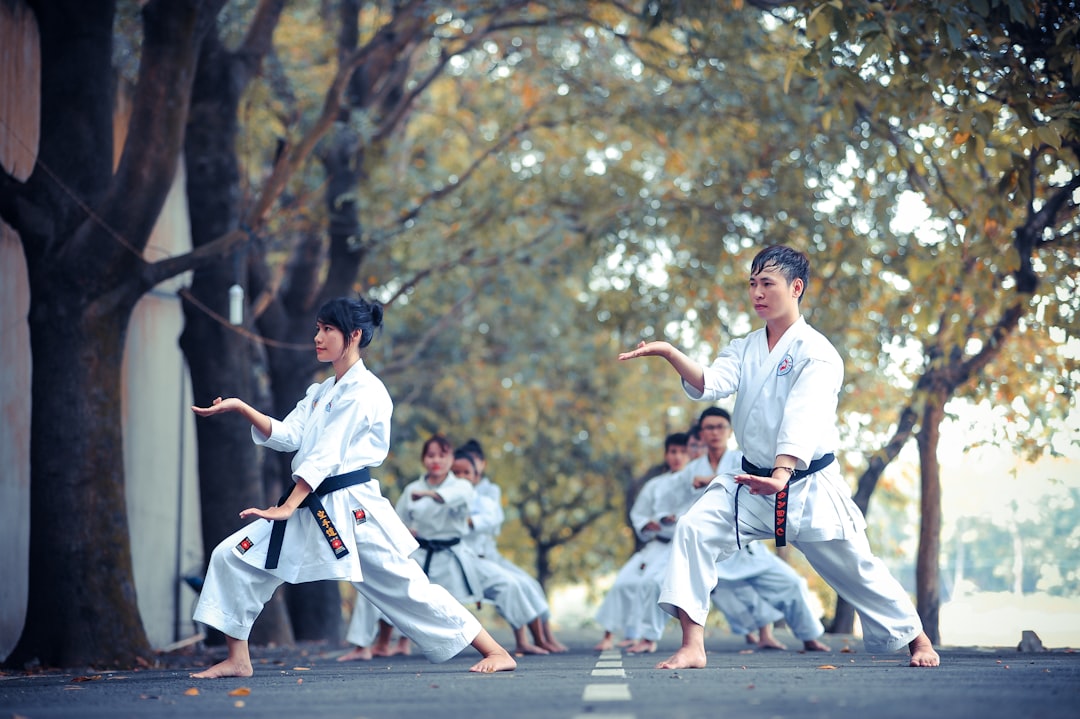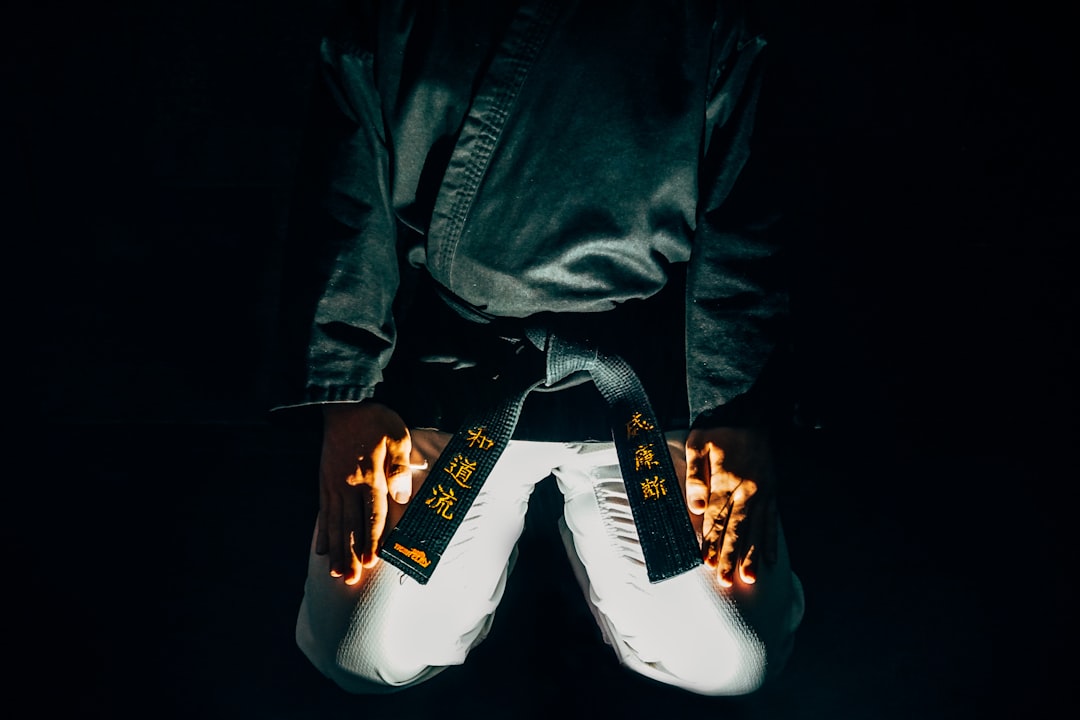Training karate at home requires the right uniform—a comfortable, breathable karate gi designed for unrestricted movement. When choosing your gear, consider natural cotton for breathability or synthetic polyester for durability and quick-drying properties. The ideal fit should complement your training style, whether lightweight sparring or intense conditioning, ensuring optimal comfort and performance during home practice sessions while preserving the philosophical foundations of karate.
Train Karate at Home: The Essential Gear for Your Journey
Embarking on your karate journey from home? Understanding the right gear is crucial. This guide delves into the fundamentals, offering insights on the traditional Karate Gi (kimono), its fabric choices, and sizing. We explore the advantages of training at home, from cost-saving measures to setting up your personal dojo. You’ll discover modern alternatives to classic attire, learn tips for maintaining your suit, and unlock online resources for a comprehensive learning experience.
- # Train Karate at Home: The Essential Gear – Your Guide to the Perfect Uniform
- 1. Understanding the Karate Gi (Kimono)
- – Definition and cultural significance of the Karate Gi
- – Types of fabrics and their impact on comfort and performance
- – How to choose the right size for a perfect fit
# Train Karate at Home: The Essential Gear – Your Guide to the Perfect Uniform

When considering how to train karate at home, one of the first things you’ll need is the perfect uniform. The standard attire for karate practitioners is known as a gi or dobok, which is more than just clothing; it’s an essential part of the martial arts experience. These uniforms are designed to be both comfortable and functional, allowing for unrestricted movement during intense training sessions.
Choosing the right one can make all the difference in your practice. Look for materials that breathe well, as you’ll likely be working up a sweat. Additionally, consider the cut and fit; it should be snug enough to stay put but not so tight as to restrict your body’s natural range of motion. With these factors in mind, you’ll be ready to embark on your karate journey with confidence, whether training at home or visiting a dojo.
1. Understanding the Karate Gi (Kimono)

The Karate Gi, or kimono, is more than just clothing; it’s a symbol of honor and tradition in karate training at home or in the dojo. This traditional garb is designed for both functionality and aesthetics, allowing practitioners to move freely while also providing modesty and respect. When you train karate from the comfort of your home, wearing the correct attire becomes even more crucial—it helps you stay focused and connected to the martial art’s rich heritage?
The Gi’s construction involves lightweight, breathable fabric that allows for a full range of motion, ensuring you’re not hindered during exercises or sparring sessions. The unique cut and design cater to both male and female practitioners, promoting equality and comfort. Whether you’re a beginner practicing basic forms (kata) or an advanced student engaging in intense sparring, the Gi serves as a constant reminder of karate’s philosophical foundations while enhancing your performance during each training session.
– Definition and cultural significance of the Karate Gi

The Karate Gi, also known as the dobori in Japanese, is an integral part of training and competing in karate. This traditional attire not only serves a practical purpose by providing freedom of movement during practice but also carries significant cultural weight. Worn by practitioners worldwide, it symbolizes dedication, discipline, and respect—core values within the martial art itself. When training at home, whether for self-defense or sport, wearing a Karate Gi reinforces the mental and physical commitment required to master karate’s techniques?
The Gi’s construction from lightweight yet durable cotton makes it breathable and comfortable, allowing for unrestricted movement during intense sessions. Its design also reflects the uniform’s functional origin, with separate pants and jacket pieces that allow for easy cleaning and drying, essential considerations for frequent use. Thus, the Karate Gi is not merely clothing but a symbol of one’s journey in karate, embodying the spirit of continuous learning and improvement?
– Types of fabrics and their impact on comfort and performance

The fabric chosen for a karate suit plays a significant role in both comfort and performance during training at home or in class. Natural fabrics like cotton are popular due to their breathability, allowing air circulation and keeping the wearer cool. This is especially beneficial during intense training sessions where maintaining body temperature is crucial. However, cotton may not be ideal for competitive settings as it can absorb moisture, leading to a heavier feel that could impact speed and agility?
On the other hand, synthetic fabrics like polyester offer superior durability and quick-drying properties. These materials are less prone to absorbing sweat, ensuring the suit remains lightweight and comfortable throughout extended training periods. While they might not breathe as naturally as cotton, synthetic suits can be a better choice for dedicated karate practitioners who require top-level performance?
– How to choose the right size for a perfect fit

When choosing your karate suit, selecting the right size is paramount for both comfort and performance during training at home. It should fit snugly but not restrict movement; ensure you can easily bend your arms and legs without the fabric getting in the way. Remember, a too-tight suit can be uncomfortable and limit your range of motion, while one that’s too loose may catch on equipment or hinder your balance?
Consider factors like your build (are you muscular, slim, or somewhere in between?) and the type of karate training you’ll primarily be doing (lightweight sparring versus intense conditioning) to determine the best fit. It’s always a good idea to try on several sizes if possible, and don’t hesitate to ask for advice from experienced practitioners at your local train karate home.
When training karate at home, the right uniform or karate gi is a key component for comfort and performance. By understanding the cultural significance and fabric choices, you can select the perfect fit, enhancing your practice experience. Embrace the tradition and begin your journey with confidence!
